#1 Philips 3200
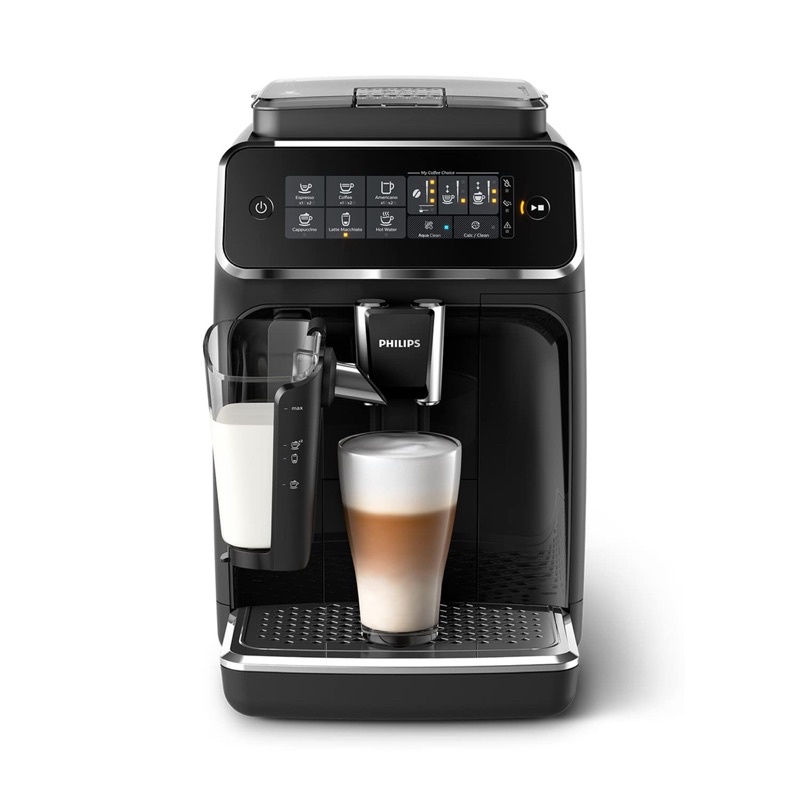
- Easy to use and navigate
- Affordable
- Compact design
#2 Philips 4300
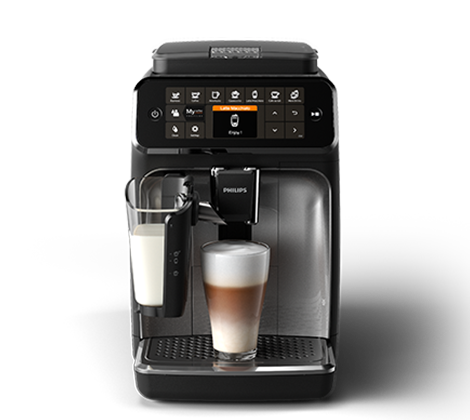
- Wide variety of drinks
- Intuitive touchscreen
- Compact with milk frothe
#3 Philips 5400

- Wide variety of drinks
- Advanced customization
- User profiles
As a self-proclaimed coffee aficionado, I’ve always believed that a great cup of coffee is the perfect way to start the day. Over the years, I’ve tried various machines, but the Philips 3200 series recently caught my attention due to its balance of quality and simplicity. As I explored further, I found myself comparing it to its more advanced siblings—the Philips 4300 and 5400 series. After putting these machines to the test, I’m here to share my honest impressions and why the Philips 3200 stands out as the best choice for most households.
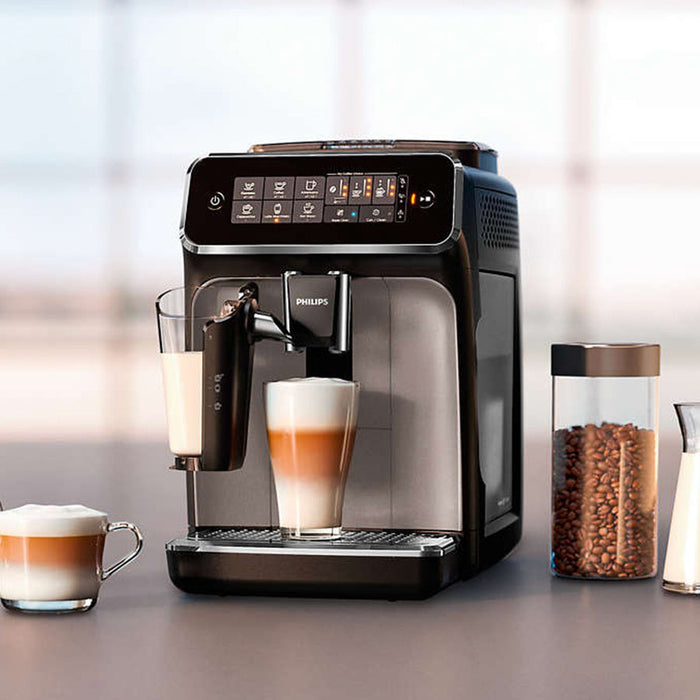
Understanding the Differences Between Philips 3200, 4300, and 5400
When I first started comparing these models, the differences weren’t immediately obvious. All three machines are fully automatic espresso machines designed to simplify the process of making high-quality coffee at home. However, after digging into the details, I noticed distinct differences in features, usability, and price points.
- Philips 3200: Offers five beverages (espresso, coffee, cappuccino, latte macchiato, and Americano) and includes the innovative LatteGo milk system. It’s perfect for someone like me who enjoys a straightforward coffee experience with minimal fuss.
- Philips 4300: Adds two user profiles and a few extra beverage options, like flat white, making it a good choice for households with multiple coffee drinkers.
- Philips 5400: Features up to 12 drink options and four user profiles. It’s the most advanced and customizable of the three, which is great for those who want maximum flexibility—but it comes with a higher price tag and slightly more complexity.
Why I Chose the Philips 3200
After testing all three machines, I found the Philips 3200 to be the best fit for my lifestyle. I prioritize convenience and simplicity, and this machine delivered both without compromising on the quality of my coffee.
The LatteGo milk system was a game-changer for me. It creates velvety milk froth that rivals what I’ve had in cafes, yet it’s incredibly easy to clean. I often make cappuccinos or lattes in the morning, and knowing that cleanup would take just a few seconds made my mornings feel less rushed.
Brewing Coffee with the Philips 3200
One of the aspects I appreciated most about the Philips 3200 was its intuitive interface. Brewing coffee was as simple as selecting a beverage on the touch display and letting the machine do the rest. Unlike the 4300 and 5400, which offer additional customization options, the 3200 focuses on getting the essentials right.
Here’s how I typically use the machine:
- Fill the water tank and bean hopper (which conveniently hold enough for multiple uses).
- Adjust the coffee strength and volume depending on my mood (I love that there are five strength levels).
- Let the machine take care of the rest, delivering a rich, aromatic cup in under a minute.
The LatteGo System: A Standout Feature
If you’re someone who loves milk-based beverages like lattes and cappuccinos, the LatteGo system is worth highlighting. I’ve used other machines with milk frothing wands and systems that require cleaning multiple tubes and parts. The LatteGo, by contrast, consists of just two dishwasher-safe pieces.
What really impressed me was the texture of the milk froth. Whether I was making a latte macchiato or adding a touch of froth to my espresso, the results were consistently smooth and creamy.
Comparing Noise Levels Between Philips 3200, 4300, and 5400
I have to admit, I’m sensitive to noise in the mornings. All three machines have ceramic grinders, which are more durable and quieter than metal grinders. However, there’s still some noise when the machine grinds the beans—this is true for all super-automatic espresso machines.
In my experience, the noise levels were consistent across the Philips 3200, 4300, and 5400. It’s not overly disruptive, but if you’re brewing coffee early in the morning in a small apartment, it’s something to keep in mind.
Cleaning and Maintenance: Philips 3200 Takes the Lead
While all three models share many maintenance features, like removable brew groups and AquaClean filters, I found the Philips 3200 to be the easiest to maintain. The LatteGo system’s simplicity was a major factor here. With no tubes to clean, I spent less time on upkeep and more time enjoying my coffee.
The AquaClean filter deserves special mention too. It’s designed to reduce the need for descaling, and Philips claims you can brew up to 5,000 cups before descaling becomes necessary. I haven’t reached that number yet, but the idea of less maintenance is always a win in my book.
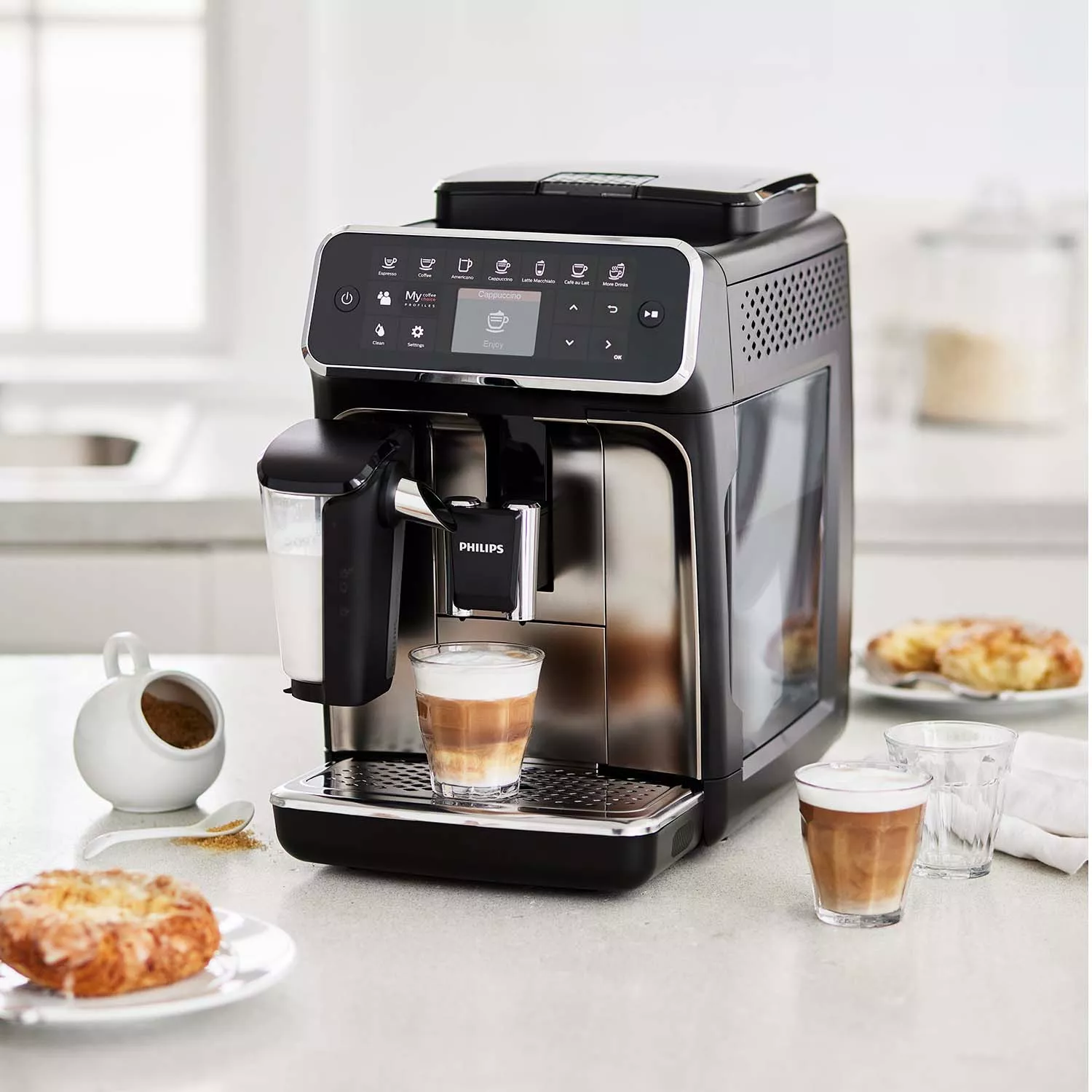
Use Cases for Each Machine
While I’ve found the Philips 3200 to be perfect for my needs, there are specific scenarios where the other models might shine:
- Philips 4300: Ideal for families or roommates who want individual user profiles and a slightly expanded beverage menu.
- Philips 5400: Great for coffee enthusiasts who love experimenting with different drinks and want access to a wider variety of beverages.
For someone like me, who prioritizes simplicity and quality over bells and whistles, the Philips 3200 hits the sweet spot. It’s easy to use, brews consistently great coffee, and doesn’t overwhelm with unnecessary features.
Final Thoughts on Philips 3200 vs 4300 vs 5400
After weeks of brewing and experimenting with the Philips 3200, 4300, and 5400, I can confidently say that the Philips 3200 is the standout choice for most people. It’s not just about the lower price—it’s about how well it delivers what it promises. If you’re looking for an espresso machine that’s reliable, user-friendly, and produces excellent coffee, the Philips 3200 is a fantastic option.
That said, if you have specific needs like multiple user profiles or an expansive drink menu, the 4300 or 5400 might be worth considering. For me, the simplicity of the 3200 made it the perfect addition to my kitchen—and it’s been brewing happiness ever since.
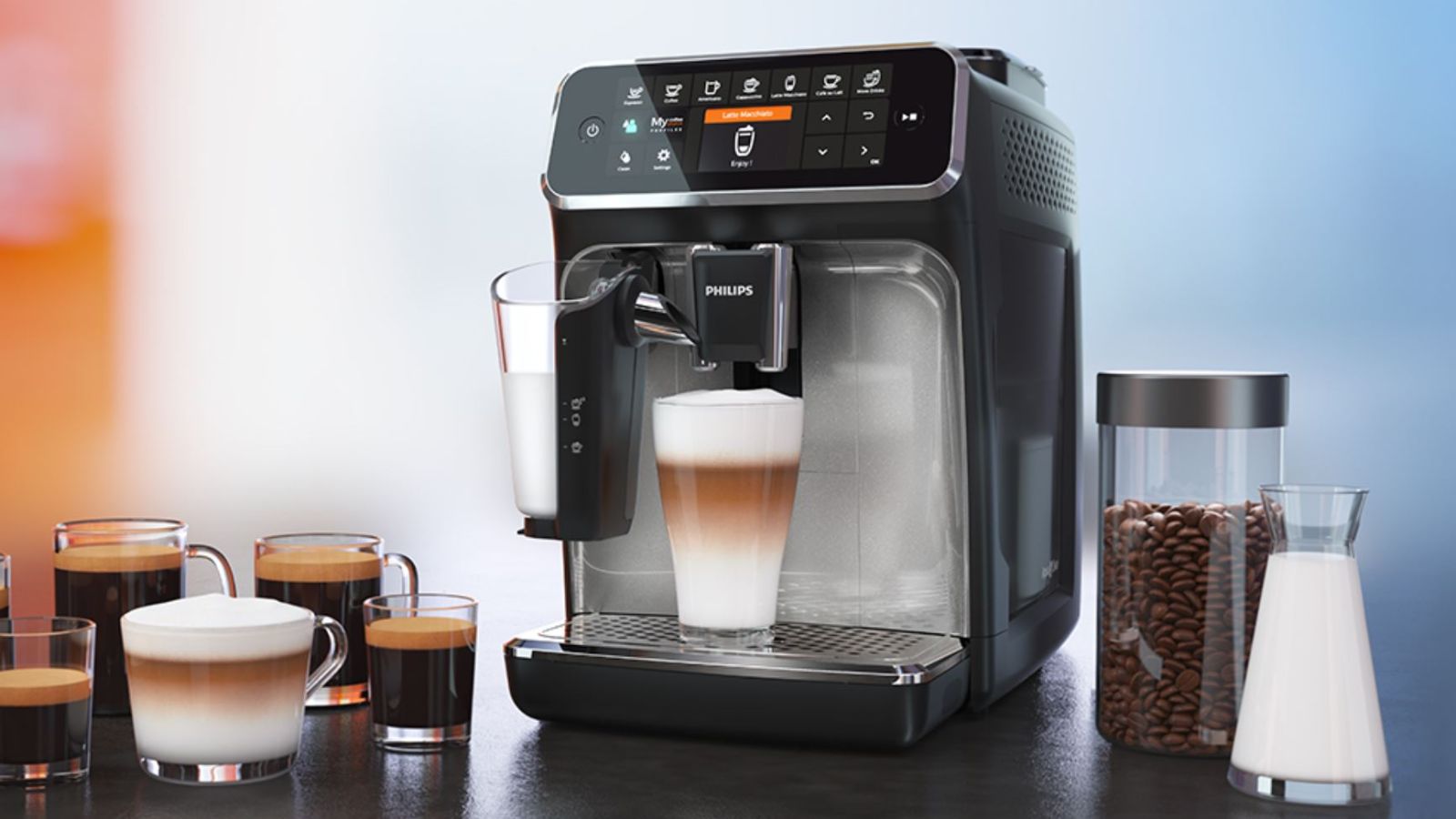
FAQs for Philips 3200 vs 4300 vs 5400
Q: What are the main differences between the Philips 3200, 4300, and 5400 series?
A: The Philips 3200 offers five beverage options and is designed for simplicity and ease of use. The 4300 includes additional beverage options and two user profiles, making it suitable for households with multiple coffee drinkers. The 5400 features the most extensive range of beverages (up to 12) and four user profiles, catering to those who desire maximum customization and flexibility.
Q: Which model is best for beginners?
A: The Philips 3200 is the best choice for beginners due to its straightforward interface and essential beverage options. It focuses on delivering high-quality coffee without overwhelming users with complex settings.
Q: How easy is it to clean the Philips 3200 series machines?
A: Cleaning the Philips 3200 series machines is quite simple. The LatteGo milk system consists of only two parts, which are dishwasher safe. The removable brew group can be rinsed under water, and the AquaClean filter helps minimize descaling frequency.
Q: Can I make multiple cups of coffee at once with these machines?
A: Yes, all three models (3200, 4300, and 5400) feature a dual spout system that allows you to brew two cups of coffee simultaneously, making it convenient for serving guests or enjoying coffee with family.
Q: What types of milk can I use with the LatteGo system?
A: The LatteGo system works with most types of milk, including dairy and non-dairy alternatives like almond, soy, and oat milk. However, the frothing results may vary depending on the milk's fat and protein content.
Q: Is there a significant noise difference between the 3200, 4300, and 5400?
A: All three models feature ceramic grinders, which are quieter than metal grinders. However, they do produce some noise during grinding. The noise levels are similar across the three models, but it’s still worth considering if you’re brewing early in the morning.
Q: How does the AquaClean filter work?
A: The AquaClean filter is designed to reduce limescale buildup in the machine. When installed, it allows for up to 5,000 cups before descaling is required, making maintenance less frequent and easier for users.
Q: Are there any specific drink options unique to the Philips 4300 or 5400?
A: Yes, the Philips 4300 includes a flat white option, while the Philips 5400 offers the most extensive drink menu, featuring beverages like ristretto and various milk-based drinks that are not available on the 3200.
Q: Can I use pre-ground coffee with these machines?
A: Yes, all three models have a bypass doser that allows you to use pre-ground coffee. This feature is convenient for brewing decaf or specialty blends without grinding fresh beans.
Q: Which model offers the best value for money?
A: The Philips 3200 offers the best value for money for most users, as it provides high-quality coffee, an easy-to-use interface, and essential features without the higher price tag of the 4300 or 5400.
Q: Do these machines come with a warranty?
A: Yes, Philips typically offers a two-year warranty on their espresso machines, including the 3200, 4300, and 5400 series. It’s advisable to check specific warranty terms in your region.
Q: Can I adjust the coffee strength and temperature on these machines?
A: Yes, all three models allow you to customize the coffee strength and temperature. The 3200 offers five strength levels, while the 4300 and 5400 provide similar options with additional customization features.
